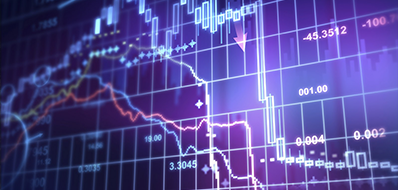
International environment
- World economy: moderate growth in the third quarter of 2019 in most countries and regions (United States, euro zone, Japan, China, India...), hampered by the weakness of investment and world trade. However, the global economic outlook has improved recently. Also, the trade tensions between china and the United States have eased.
- Euro zone: sluggish growth (0.2% in the third quarter of 2019 against 0.2% in the second quarter of the same year). In terms of outlook, the resilience of consumption in the euro zone will still benefit from significant gains in household purchasing power, especially in France, the main economic partner Morocco.
- EURO: EUR / USD exchange rate: 1.11 on 19 December, dropped by almost 2.9% since the beginning of 2019.
- Oil: the price of Brent oil stood at 68$ a barrel on December 19th, recording an increase of 11% over the month.
Sectoral trends
- Primary sector: positive outlook for the 2019/2020 agricultural season and continued recovery of the fisheries sector (+6.6% at the end of October).
- Secondary sector: a favourable positive growth in the industrial sector (+2.2% at the end of September), extractive sector (+2.8% at the end of September), electric power industry (+19.5% at the end of October) and cement consumption (+3% at the end of November) .
- Tertiary sector: positive developments in the tourism sector (arrivals: +6.4% at the end of August), transport (air passengers: +11.8% and port activity +5% at the end of October) and telecommunications (+1.9% in the first quarter of 2019).
Households and businesses
- Household purchasing power: small increase in consumer prices (+0.3% at the end of October), creation of 238,000 paid jobs in the third quarter of 2019 and appreciation of consumer credits (+4.6% at the end of October).
- Investment: increase in equipment loans (+3.6% at the end of October), and imports of capital goods (+9.4% at the end of October) and strengthening of the State budget investment (+5.3% at the end of November).
Foreign trade
- An increase of 3.1% in exports, mainly driven by the agriculture and agri-food sectors (+5.3%), automobile industry (+3.3%), aeronautic industry (+7.5%) and OCP (+0.9%).
- Widening of the trade deficit by 3.1% and stagnation in the coverage rate at 57.5% at the end of October.
- Travel receipts and Remittances by Moroccan Residents Abroad (MREs) covered 70% of the trade deficit.
- Net International Reserves cover 4 months and 28 days of imports of goods and services.
Public Finances
- A decrease of 3.7% in the budget deficit to stand at MAD 39.6 billion at the end of November 2019, benefiting from the increase recorded in regular income at a rate that outpaces that of overall expenditure (+6.9% against +5.1%).
Financing of the economy
- Acceleration of bank credit growth (6.1% at the end of October against +1.7% last year,) mainly driven by the increase in cash loans (+9.9%) and financial credits (+14.9%), but also by equipment loans (+3.6%), real estate loans (+3.3%) and consumer credits (+4.6%). Upward correction of the MASI and MADEX stock market indices during November: +2.9% and +3% respectively, compared to the end of October 2019, bringing their performance to +4% and +4.4%, compared to the end of December 2018
Source: DEPF economic outlook, Ministry of Economy and Finance, 2020



